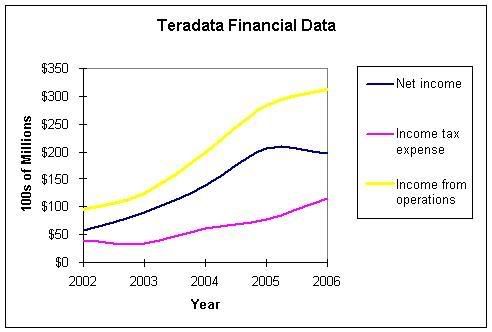
Data mining is the process by using certain algorithms, software and tools to retrieve, collect, analyze and report information (known as predictive analysis) from a large pool of data. Data mining is very useful today in which information is widely available. Information obtained from data mining is used for several applications for decision making related to direct marketing, e-commerce, customer relationship management, health, oil and gas industry, scientific tests, genetics, telecommunications, financial services and utilities.
Web data mining is the automated process of extracting data from the World Wide Web. Internet has extensive data on everything that can be used effectively to make intelligent decisions. However, taking and sorting through large databases is a daunting task. Therefore, there are certain data mining tools that help to make this easier. Tools can select relevant data and interpret it as needed.
There are many types of Web data mining: mining standards, verification of data and custom mining. Web data mining products can perform various functions that are very broad, including: search engine optimization and website promotion, double transformation and marketing of modular indicators for CRM, web log reporting, tracking patterns of website visitors, visitors to calculate the conversion ratio, reported the online customer behavior, analyze click-through, providing real-time log analysis, campaign tracking, street clicks, geographical setting, with a keyword search engine, report a web visitor analysis, content analysis, extract web events such as the results of campaigns, web traffic, etc.
There are several commercially available Web data mining and web mining applications using available software. Some of them are: AlterWind Log Analyzer Professional, Amadea Web Mining, ANGOSS KnowledgeWebMiner, Azure Web Log analyzer, the Blue Martini Customer Interaction System Micro Marketing module, ClickTracks, ConversionTrack from Antssoft, Datanautics, (formerly counting), eNuggets, (real- time middleware), LiveStats from DeepMetrix, Megaputer WebAnalyst, MicroStrategy Web Traffic Analysis Module, Web Analytics NetGenesis, family NetTracker, Nihuo Web Log Analyzer, prudsys ECOMMINER, Webhound SAS, SPSS Clementine Web mining, Weblog Expert 2.0 for Windows, WebTrends, suites Data Mining web traffic information, XAffinity (TM), XML Miner, 123LogAnalyzer. There is also a free version of web software such as Data Mining: AlterWind Log Analyzer Lite, Analog (from Dr. Stephen Turner), Visitator and WUM (Web Utilization Miner.)
Reference:
[1]http://EzineArticles.com/?expert=Ross_Bainbridge

 Data visualization is increasingly an essential element of business intelligence (BI). No longer restricted to specialized applications, data visualization in the form of charts, maps, and other graphical representations is enabling business users to better understand data and use it to achieve tactical and strategic objectives. Moreover, data visualization is prompting a cultural shift toward more analytic, data-driven business and operations by empowering users to explore, in a graphically inviting medium, data that was previously available only in tabular reports.
Data visualization is increasingly an essential element of business intelligence (BI). No longer restricted to specialized applications, data visualization in the form of charts, maps, and other graphical representations is enabling business users to better understand data and use it to achieve tactical and strategic objectives. Moreover, data visualization is prompting a cultural shift toward more analytic, data-driven business and operations by empowering users to explore, in a graphically inviting medium, data that was previously available only in tabular reports.
 Business intelligence is one of the most important systems are given much attention by employers. When it comes to the deployment of BI, you need to check and align their metrics from top to bottom and even in the functional areas of the organization. While this can be very tie consuming for you, you are guaranteed that you will have a long and successful career in the business world.
Business intelligence is one of the most important systems are given much attention by employers. When it comes to the deployment of BI, you need to check and align their metrics from top to bottom and even in the functional areas of the organization. While this can be very tie consuming for you, you are guaranteed that you will have a long and successful career in the business world. In September 2009, IBM published the results of their survey with the 2600 CIO from 78 different countries and 19 different industries. 83% of CIOs interviewed personally selected Business Intelligence and Analytics as their main priority for 2009 and 2010.
In September 2009, IBM published the results of their survey with the 2600 CIO from 78 different countries and 19 different industries. 83% of CIOs interviewed personally selected Business Intelligence and Analytics as their main priority for 2009 and 2010.